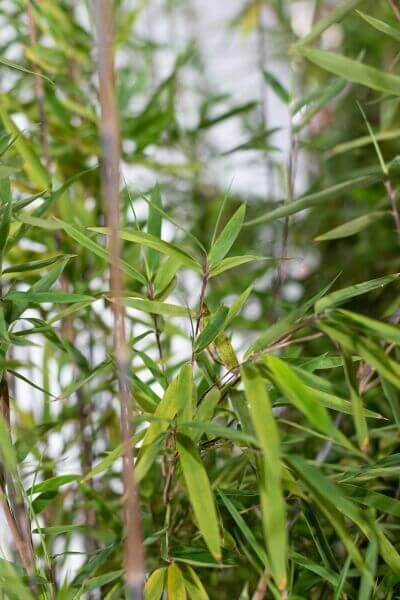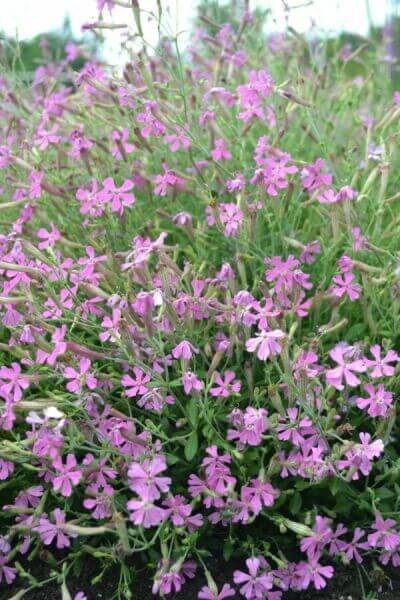Hedge Plants For Green Walls
Enhance your garden's appeal with lush hedge varieties such as Yew (Taxus), Thuja, Laurel, Photinia, and Bamboo, commemorated for their structural stability and ecological advantages.
Yew and Thuja provide evergreen protection and winter season durability, while Laurel uses rapid development and broad, aromatic leaves.
Photinia adds seasonal appeal with its lively red foliage, and Bamboo lends a low-maintenance, peaceful atmosphere.
These hedges improve air quality, decrease sound, and create tranquil, personal spaces.
Correct planting, spacing, and maintenance guarantee energetic development and ecological harmony.
Explore how these lavish ranges can elevate your garden's appeal and well-being.
Key Takeaways
Change Your Garden With Lush Hedge Ranges
- Select Yew for its thick, evergreen growth and unrivaled durability.
- Go with Laurel for its fast growth and broad leaves, guaranteeing quick privacy.
- Choose Photinia for its dynamic seasonal foliage, which turns a striking dark red.
- Use Bamboo for a low-maintenance, winter-hardy hedge with visual appeal.
- Area plants 2-3 per meter and prune routinely for optimum development and health.
Popular Hedge Plants
When changing a garden with lavish hedge ranges, it's necessary to consider popular hedge plants such as Yew, Thuja, Laurel, and Photinia due to their distinct attributes and advantages.
Yew (Taxus) is extremely respected for its durability and thick, green development, making it a prime option for sustaining landscapes.
Thuja is kept in mind for its evergreen foliage and robust winter season strength.
Photinia includes seasonal vibrancy with red leaves that darken gradually, developing vibrant visual appeal.
Laurel provides fast growth and fragrant, broad leaves, ideal for quick privacy.
Additionally, Bamboo is an outstanding choice for ambiance, using a low-maintenance, winter-hardy alternative that boosts the garden's aesthetic with its stylish, swaying canes.
These selections deal with a range of horticultural needs and preferences.
Advantages of Garden Hedges
Garden hedges provide a wide variety of benefits, making them a valuable addition to any landscape. These natural barriers are affordable to implement and supply considerable wind protection, boosting air blood circulation and contributing to sound decrease. The dense foliage of hedges like Thuja and Beech makes sure privacy by blocking exposure, creating a secluded and peaceful environment.
Hedges also play a vital role in microclimate guideline, offering a steady environment that cultivates plant growth and minimizes temperature level fluctuations. Their detailed leaf structures filter contaminants, enhancing air quality and contributing to a much healthier garden ecosystem.
Furthermore, hedges master noise reduction, soaking up and deflecting sound waves to lower ambient sound levels. This double functionality of supplying both visual and acoustic personal privacy enhances the general tranquility and aesthetic appeal of any garden.
Planting and Upkeep Tips
For a successful hedge, precise preparation of the planting location is crucial. Guarantee the soil has correct pH and drainage to support strong root development.
Area the plants properly for the chosen species. Water the hedge regularly throughout its initial growth stage, changing as required with seasonal changes.
Execute a organized insect control and disease avoidance strategy, using natural or chemical treatments when required. Frequently inspect for aphids, mites, and fungal infections.
Apply mulch to keep wetness and reduce weeds. Seasonal pruning promotes thick development and air blood circulation, essential for plant health.
Following these guidelines will help you cultivate a lively, well-maintained hedge that boosts the beauty of your garden.
Spacing and Trimming Guidelines
Spacing and Trimming Guidelines
Proper spacing and trimming are crucial for cultivating healthy, visually appealing hedges. Adequate spacing ensures each plant receives sufficient nutrients, light, and airflow.
Follow these guidelines for optimal hedge maintenance:
- Spacing: Position hedge plants 2-3 plants per meter to encourage robust growth.
- Pruning Techniques: Routine pruning is essential for keeping wanted hedge height and shape. Cut brand-new development in summer season and cut back older wood throughout winter.
- Seasonal Care: Change cutting approaches and schedules according to seasonal requirements to make sure plant health.
- Hedge Height: Frequently display and cut to preserve the preferred hedge height and achieve consistent visual appeals.
Complying with these actions will ensure your hedge thrives, boosting both the appeal and performance of your garden.
Choosing the Right Hedge
Choosing the Right Hedge
Picking the proper hedge involves assessing aspects such as fully grown height, foliage density, and ecological strength. Effective hedge plant selection requires comprehending each types' growth qualities and site-specific adaptability.
For example, Yew (Taxus) offers exceptional longevity and thick growth, while Thuja is noteworthy for its winter season resilience. In addition, considering upkeep requirements is crucial; fast-growing species like Laurel or Privet demand routine trimming, whereas low-maintenance alternatives like Bamboo or Ivy may be more effective for those seeking very little upkeep.
Ecological factors such as soil type, light accessibility, and moisture conditions need to also direct the choice process. This mindful approach makes sure the chosen hedges will prosper, supplying both aesthetic and practical advantages to the garden landscape.
Delivery and Planting Recommendations
To ensure your hedge plants flourish, they need to be delivered by specialized couriers and planted without delay upon arrival.
Follow these essential steps for effective planting:
- Soil Preparation: Improve the soil with organic matter to enhance drain and nutrient material.
- Planting Depth: Create a trench twice the width and equivalent to the depth of the root ball.
- Watering Strategies: Water thoroughly after planting, keeping the soil regularly moist but not filled.
- Mulching: Use a layer of mulch to retain moisture and suppress weeds.
Client Assistance and Service
Offered the crucial function of prompt help in horticultural pursuits, our consumer support team is available six days a week through telephone, email, and social networks to use skilled suggestions and promptly address any concerns. Their dedication to quick response times ensures customer complete satisfaction by dealing with inquiries associated with plant health, ideal planting approaches, and upkeep schedules.

Interaction Method
----------------------
Within 24 hr
Within 48 hours
This thorough support group, reinforced by an outstanding 9.3/ 10 client score, highlights our dedication to boosting the gardening experience for every single customer.
Often Asked Concerns
The Length Of Time Does It Consider Hedge Plants to Develop?
Hedge plants usually need one to 3 years to end up being totally developed, with the specific period differing by species and growing conditions.
Efficient care during this crucial period is important for robust growth. Consistent watering, vigilant weed control, and appropriate fertilizer application are pivotal in promoting strong root advancement.
For instance, fast-growing types like Laurel might establish quicker, while slower-growing varieties such as Yew may take longer. Thorough upkeep accelerates the establishment process, leading to healthy and dense hedges.
What Are the Finest Hedge Plants for Personal Privacy?
The concern of the finest hedge plants for personal privacy involves evaluating evergreen and deciduous options.
Evergreen hedges like Thuja, Laurel, and Cypress supply year-round protection, guaranteeing continuous personal privacy.
On the other hand, deciduous hedges such as Beech use seasonal personal privacy, shedding leaves in colder months.
Secret upkeep suggestions for privacy hedges consist of routine trimming, fertilizing in spring, and correct spacing-- usually 2 to 3 plants per meter.
Additionally, constant watering and persistent weed removal are vital for promoting healthy, dense development.
Can Hedge Plants Draw In Wildlife to My Garden?
Yes, hedge plants can attract wildlife to your garden by supplying important benefits like shelter, food, and nesting websites, consequently enhancing regional biodiversity. Yew, holly, and laurel are exceptional for drawing in birds, while ivy supports a range of insects.
Nevertheless, it's important to keep in mind that there are some drawbacks, such as increased maintenance to handle pests and routine maintenance. Carefully picking and maintaining hedge ranges can assist balance these disadvantages and advantages, ultimately promoting a lively and sustainable community in your garden.
Exist Any Flowering Hedge Plants Available?
Yes, there are flowering hedge plants offered that can boost the beauty of your garden.
For example, Elaeagnus, likewise understood as Olive Willow, produces aromatic white flowers in the fall, adding a touch of beauty.
Photinia, another popular option, showcases vibrant red leaves that mature into a rich green, creating a dynamic visual impact throughout the seasons.
To make sure these plants thrive, it's important to practice appropriate pruning strategies and seasonal upkeep, such as cutting new growth in the summer and cutting back in the winter season.
These procedures will assist keep the health and visual appeal of your flowering hedges.
How Do I Prevent Pests in My Hedge Plants?
To prevent insects in hedge plants, utilize natural insect control approaches and keep correct hedge care. Present helpful pests like ladybugs, which prey on harmful bugs, to develop a balanced community.
Routinely examine your hedges for signs of infestation and quickly eliminate any afflicted parts to prevent the spread. Guarantee the health of your hedges by applying balanced fertilizers and supplying appropriate water.
Make use of mulching to keep soil moisture and proper spacing to reduce plant tension and promote robust development. These practices jointly help in lessening insect problems and maintaining a healthy hedge.
Conclusion
In essence, choosing the ideal hedge ranges such as Yew, Thuja, and Laurel can transform any garden into a tranquil sanctuary. These plants offer year-round greenery, enhance visual appeal, and offer practical advantages like noise decrease and wind security.
Proper planting techniques, precise spacing, consistent watering, and seasonal cutting are important for optimal development.
Trustworthy delivery services and expert consumer support make sure a seamless experience from purchase to planting, making it easier than ever to elevate your outdoor area.
Garden hedges offer a wide range of benefits, Additional reading making them an important addition to any landscape. These natural barriers are affordable to carry out and offer significant wind security, enhancing air blood circulation and contributing to noise decrease. The dense foliage of hedges like Thuja and Beech guarantees privacy by obstructing presence, creating a tranquil and secluded environment.

Pruning Methods: Regular pruning is essential for keeping preferred hedge height and shape. Trim brand-new development in summer and cut back older wood throughout winter.